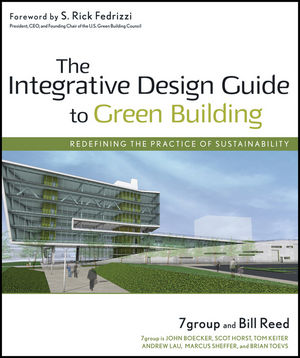Probably the biggest challenge in implementing a waterside economizer system is accomplishing the goal of a seamless transition into and out of the economizer operational mode. In most applications today, especially where data centers and other sensitive loads are involved, this changeover needs to occur with little or no interruption of chilled water supply to the building.
Waterside economizers typically involve the use of a cooling tower and heat exchanger to generate chilled water instead of operating a chiller. In order to generate 45 degrees F chilled water, the condenser water temperature leaving the tower would have to be maintained below 43 degrees. The maximum wet bulb temperature required to achieve 43 degrees condenser water would be in the neighborhood of 40 degrees. As the wet bulb temperature rises above 40 degrees, the economizer system loses its capability to generate 45 degrees chilled water and its time to initiate mechanical cooling.
Making the transition from economizer mode back to mechanical cooling can be precarious because most chillers require a minimum condenser water temperature (typically 60 degrees to 65 degrees) to operate properly. So the question is: How do we deal with a condenser water piping system full of 43-degree-water? The solution lies in the location of the heat exchanger relative to the chillers.
Figure 2 is a schematic diagram of a typical condenser water piping loop for a water cooled plant. Locating the heat exchanger at the end of the circuit (HX-3) would probably be least desirable. In that location, the entire loop from the tower to the heat exchanger would be maintained in the low 40s while in the economizer mode. To initiate mechanical cooling, the water would have to be recirculated through the tower bypass control valve to raise the temperature prior to starting a chiller. The piping itself is likely insulated all the way to the heat exchanger, so that a substantial amount of time would be required to raise the temperature of the water to 60 degrees or 65 degrees simply through piping heat gain.
The best location for the heat exchanger would be on the "cold side" of the tower bypass valve (HX-1). When in the economizer mode, the cold condenser water always recirculates back to the tower and does not enter the "warm side" of the loop, which is basically at room temperature. When changing back to mechanical cooling, any of the three chillers can be started immediately, and the tower bypass valve would modulate to maintain the proper temperature entering the chillers. Once the temperature leaving the towers (TS1) reaches setpoint, the bypass valve goes back to its normal control sequence.
In some cases, the HX-1 location may not be feasible. For example, the tower bypass control valve may be located near the towers and not in the mechanical room. A good alternative would be to install a second bypass control valve and locate the heat exchanger on the "cold side" of that bypass (HX-2). As described above for the HX-1 location, flow is limited to the tower side of the new bypass when in economizer mode. When switching back to mechanical cooling, any chiller located on the "warm side" (Chiller 2 or 3) can be started immediately.
An additional sensor (TS2) would modulate the new bypass valve as required to maintain the desired condenser water temperature entering the operating chiller. When the temperature leaving the cooling tower at TS1 reaches the desired setpoint, the new bypass remains permanently closed and the plant operates as it normally would in mechanical cooling.
When designing a waterside economizer system, the location of the heat exchanger is the most important decision to be made. And with some minor control modifications, it's possible to achieve a stealth transition that has the owner saying "Oh, we're out of economizer mode now?" instead of "Buckle up, here we go again!"ES
EDITOR'S NOTE:The images associated with this article do not transfer to the Internet. To review the figures, please refer to the print version of this issue.


